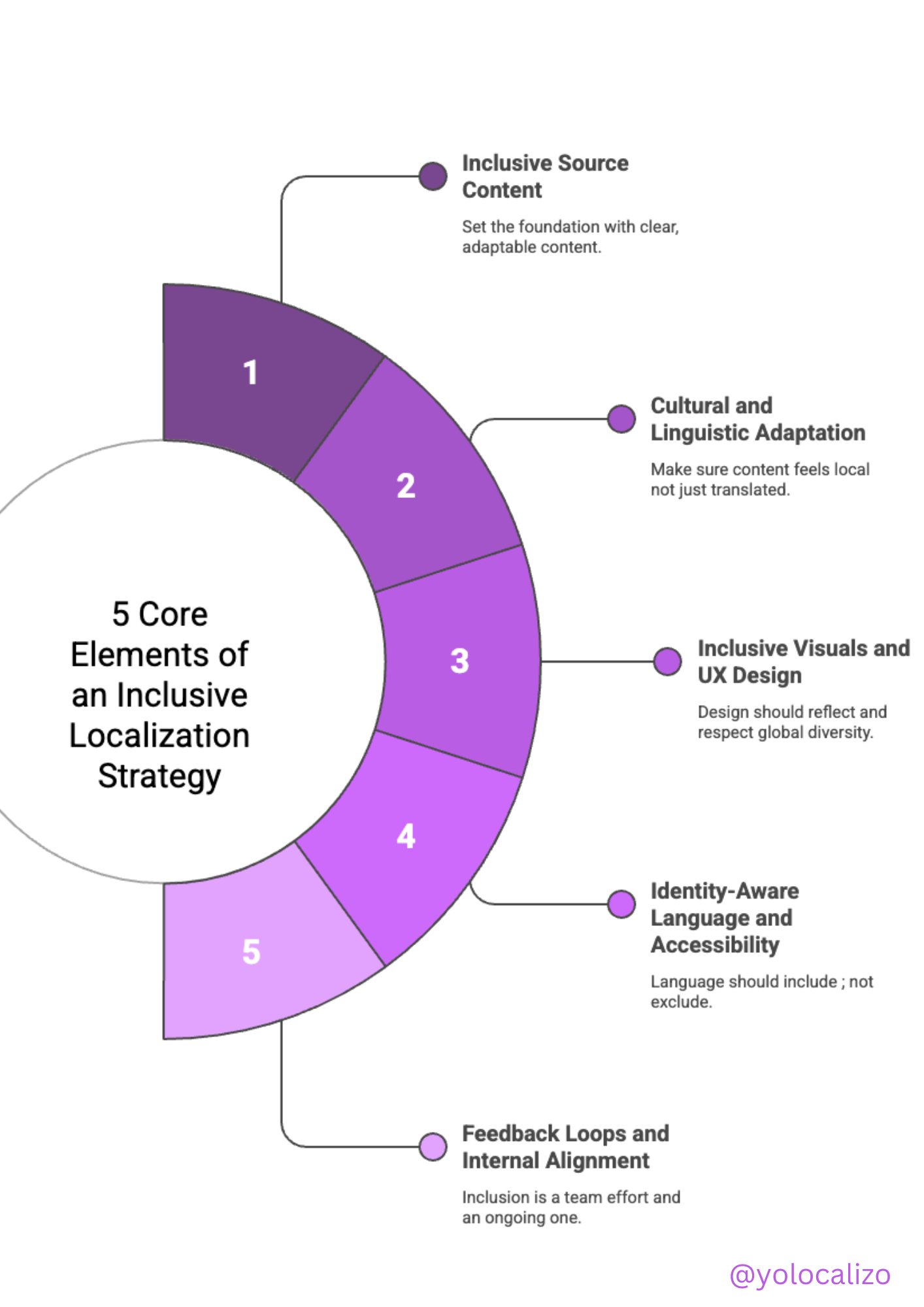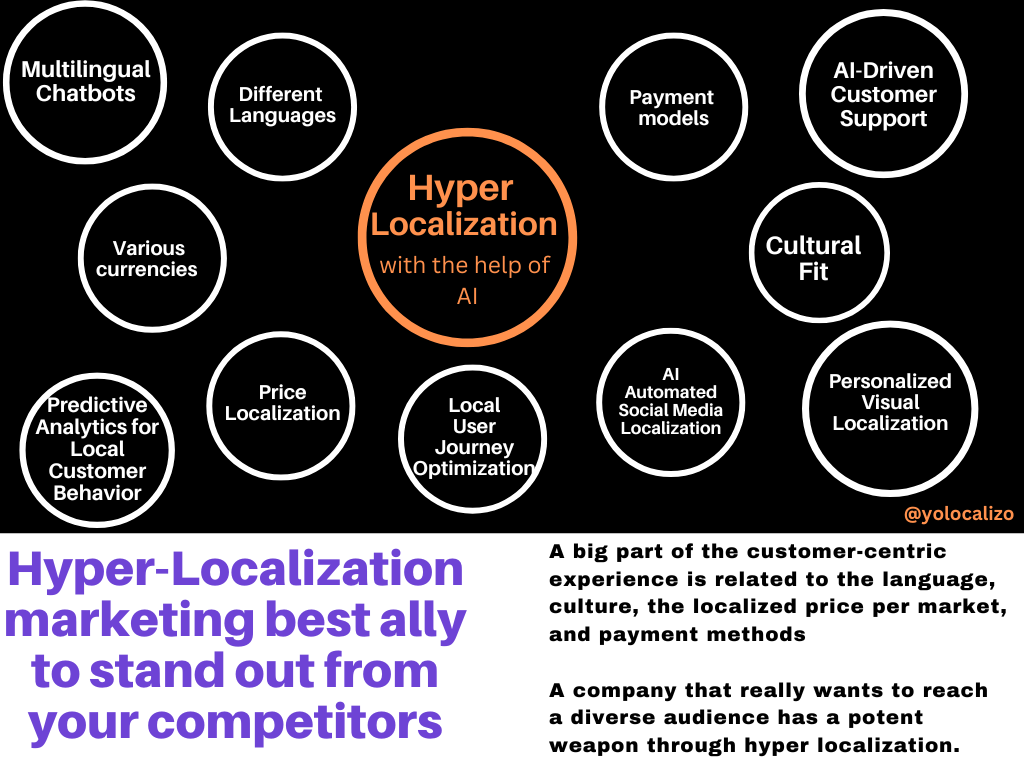The benefits of prioritizing customer experience in your Localization strategy (and how to do it with the help of AI)
Do you really want to make the customer experience your top priority? Then meet multilingual hyper-personalization: the localization strategy to delight your potential customers!
A few years ago, I worked on a mobile phone project. Every Friday, we had meetings to discuss progress and explore opportunities ahead. Two things stuck with me from those meetings: the chocolate hazelnut doughnuts the program manager brought 😋 and the word "synergy," which was repeated endlessly.
At first, the word "synergy" felt fresh and inspiring. I remember thinking:
"We have to generate synergies with the service providers." Hmmm, that sounds smart!
"We must create synergies with the localization engineers to internationalize our code." Of course, why hadn’t I thought of that?
"We need to evaluate synergies with the sales team to maximize results." Yes, that’s a great idea!
But after weeks of hearing synergy repeatedly, I grew tired of it. By the end, I thought, “How cool would it be to earn a euro every time someone said ‘synergy’?” 🤑
Fast forward to today, and I’m starting to feel the same about another buzzword (or two): customer experience.Now, it seems like everything is about customer experience:
Customers must have a delightful user experience.
We must put customers at the center of the universe.
Customer experience is our biggest priority.
And while I fully support making customers happy, I often wonder why many companies overlook one crucial element in achieving this holy grail of customer experience: localization.
That’s what I want to explore in this post,how localization (or, better yet, hyper-localization) can create the delightful customer experience everyone is chasing. And now, with the rise of AI, we have a golden opportunity to push the boundaries even further, embracing multilingual hyper-personalization at scale.
What is hyper-localization?
Hyper-localization is the process of creating content that’s not just relevant but uniquely tailored to a potential customer, using the data you have about them. By personalizing content this way, we can offer customers products, services, and experiences that feel like they were designed specifically for them.
Take Amazon as an example. They send personalized emails based on customers’ search and purchase history. Once, I received an offer for a Fitbit Charge 3 strap,exactly what I needed,because I’d bought the Fitbit earlier. The email wasn’t just personalized with my name; it also included localized pricing in euros. That’s hyper-localization in action.
Amazon efficiently utilizes personalized emails based on customers' search history or purchase data to improve their customer experience. An example of this is when they sent me a personalized offer for a Fitbit Charge 3 strap, based on my past purchase history. The email was fully personalized, including my name and localized pricing in euros.
Nowadays, hyper-personalization can be achieved easier than ever … and here’s where AI comes into play.
The AI advantage: Hyper-personalization at scale
AI unlocks possibilities we could only dream of a few years ago. It allows us to analyze massive amounts of data about customer preferences, behaviors, and even cultural nuances to create hyper-personalized content,and do it in multiple languages simultaneously.
Imagine this: Instead of generic marketing campaigns, AI can help you deliver tailored experiences to each user, regardless of their language or location. With the right AI tools, we can:
Create dynamic, personalized website content that adapts based on user preferences.
Use AI-driven chatbots to provide instant customer support in any language, tailored to the user's cultural context.
Generate personalized product recommendations in the customer’s native language, with region-specific pricing, imagery, and messaging.
AI makes multilingual hyper-personalization scalable and accessible. It turns localization into a strategic advantage, giving brands the power to connect with customers in ways that feel personal, authentic, and relevant.
“Some companies sometimes forget that a Customer-centric strategy without an accompanying localization strategy to support it does not work.”
One important aspect of a customer-centric experience is the language, culture, localized prices, and payment methods in each market.
However, it's disheartening to see companies claim to follow a customer-centric strategy on their website but fail to implement it in their mobile applications. For instance, they may choose a font that doesn't support special characters, resulting in errors.
As I've mentioned before, together is better. Through Localization, we can break down silos and build bridges between cultures and markets. Hyper-localization is a powerful tool for reaching a diverse audience.
By combining your marketing and hyper-personalization strategies with the expertise of your Localization team and/or LSP, your product can stand out from the competition. This can lead to higher engagement, better conversion rates, and overall performance.
A marketing strategy that doesn't incorporate feedback from Localization professionals will fail to make customers feel like they are the center of the universe. Likewise, a localization strategy without marketing feedback will also fall short. So remember, together is better!
How To Achieve Hyper-Personalization with Localization?
Personalization and localization are fundamental elements in this union.
You need to offer your website/product in different languages
You need to consider the various currencies of your customers
You need to adapt your price purchasing power by region
You need to offer the payment model which best suits each of them.
You need to use images that are relevant to their culture.
You need to use a tone in the content aligned to their lifestyle.
You need to enable multilingual chatbots so customers can access answers to their questions quickly in their native language and build trust.
You need to send multilingual marketing messages with targeted results of all the data you collected.
You need to localize your keywords to increase your search visibility
You need to localize the “Google My Business” experience to drive customer engagement at a local level
You need to create hyperlocal content adapted for each market and forget about starting in English and then translating ( better approach it’s implementing a Transcreation strategy).
Click HERE to downlaod the infographic
Conclusion
Today, customers are bombarded with generic marketing messages, so standing out requires a personalized approach. Hyper-localization isn’t just a nice-to-have; it’s a necessity. By integrating AI into your localization strategy, we can go beyond personalization to achieve hyper-personalization at scale.
Marketing is all about understanding people, and if you implement the suggestions summarized in the infographic above, I’m pretty sure this will contribute to your business thriving.
Although hyperlocalization can be challenging, it is incredibly productive when done correctly. By combining hyperlocalization with marketing, you can take your business to the next level and attract new potential clients.
@yolocalizo
















Localizability has always been a challenge small issues in source content often lead to big problems later in translation. In this post, I explore how AI is giving localization teams a powerful new way to improve source quality, reduce friction, and create better content for every market right from the start.